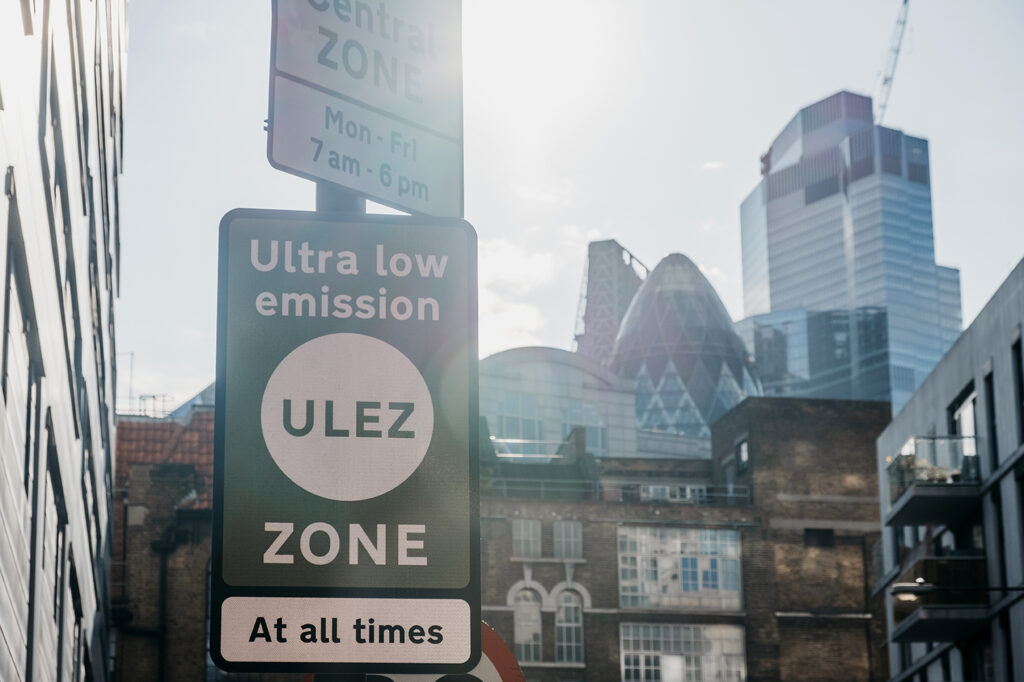The recent expansion of London’s Ultra-Low Emission Zone (ULEZ) has led to a dramatic increase in the number of charges for driving in the city.
In the first week following the scheme’s expansion, there was an almost 300,000 jump in the number of charges, highlighting the public impact of this policy change. The ULEZ, aimed at reducing pollution, now encompasses a much larger area of London, affecting more of London’s citizens.
Plan Insurance can provide bespoke taxi insurance quotes for all UK drivers. Just fill in our short online questionnaire, and our professional brokers will be in contact to arrange your insurance.
The pockets of London’s motorists are hurting
The financial implications of the ULEZ expansion are substantial. London motorists paid over £5.3 million in daily charges in the first week alone. This figure is calculated on 425,814 charges paid between August 29 and September 4.
That is a stark increase from 141,029 charges the week before the ULEZ expansion. The £12.50 daily fee applies to drivers in outer London with vehicles that don’t meet the emissions standards. This primarily affects petrol cars registered before January 2006 and diesel vehicles registered before September 2015.
The impact on the public is huge
Prior to the expansion on August 29, the ULEZ boundaries were confined to the North Circular and South Circular roads. The expanded zone now covers every road in London, extending to areas in Buckinghamshire, Essex, Hertfordshire, Kent, and Surrey.
This expansion has sparked controversy, with some campaigners accusing Mayor Sadiq Khan of using ULEZ as a money-making scheme. They question the actual environmental benefits, a sentiment echoed during the Uxbridge & South Ruislip by-election in July.
Research by Motorway, a used car marketplace, reveals that 16% of Londoners, approximately 714,000 people, do not own a ULEZ-compliant vehicle. Alex Buttle, co-founder of Motorway, notes that the cost of living crisis, coupled with the ULEZ expansion, is causing London drivers to reconsider their driving habits.
The financial burden is a big concern, particularly amidst the wider economic challenges facing Londoners.
London questions the mayor’s motives
The environmental benefits touted by Mayor Khan and Transport for London (TfL) are under scrutiny. The Advertising Standards Authority (ASA) is investigating complaints that TfL exaggerated the benefits of ULEZ in improving air quality. A draft report by ASA suggests that some claims in TfL’s advertisements were misleading, particularly regarding the reduction of nitrogen dioxide levels.
In the initial phase post-expansion, TfL sent almost 40,000 warning letters to drivers of non-compliant vehicles. They followed this with thousands more over the subsequent weeks before issuing fines. TfL and Mayor Khan have stated that any net revenue from ULEZ will be reinvested into public transport, including expanding bus services in outer London. This reinvestment strategy aims to mitigate some of the financial burdens on motorists while enhancing public transport options.
What will an expanded ULEZ mean for London in the future?
The true impact of the ULEZ expansion on air pollution in London will become apparent after the government publishes a report six months into the scheme. This report will be a turning point, providing concrete data on whether the expansion has genuinely improved air quality in London.
Even if it is positive, will this satisfy motorists that their costs are justified? Most likely not.
The ULEZ expansion in London represents a major shift in urban environmental policy. While it has led to a substantial increase in charges for motorists, the long-term benefits, particularly regarding air quality and public health, are yet to be fully understood.
The debate around the ULEZ highlights the challenge of balancing environmental objectives with the economic realities faced by London residents.


